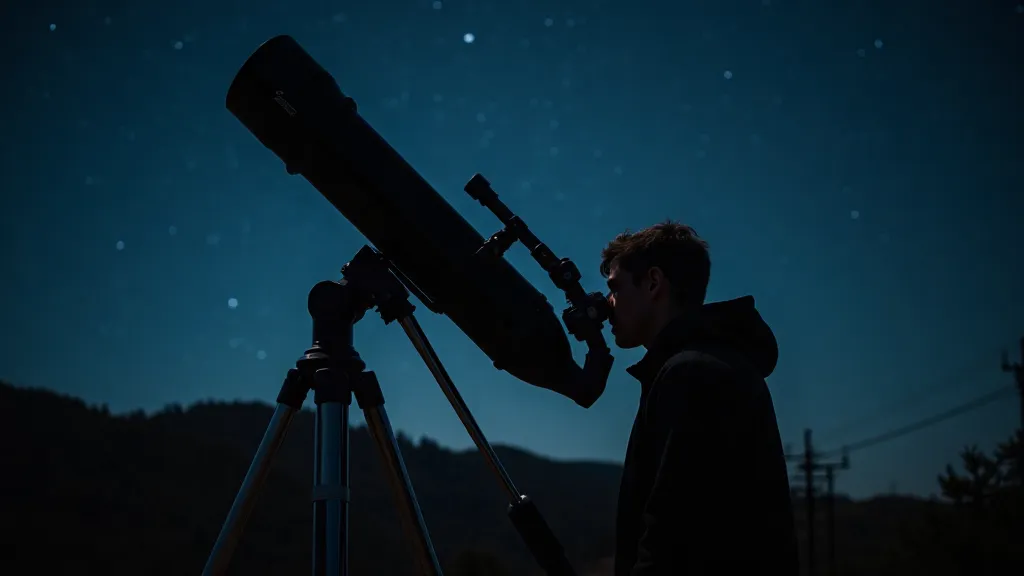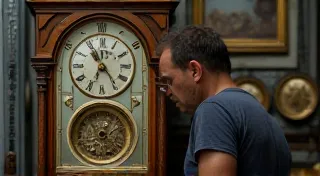Schmidt-Cassegrains: The Architect's Compromise Between Aperture and Portability
There’s a certain beauty in a compromise, isn't there? A recognition that perfection often lies not in the unattainable, but in the elegant solution found within constraints. Think of an antique accordion. Its bellows, keys, and reeds – each a marvel of individual engineering – are seamlessly integrated into a portable instrument, capable of filling a grand hall with music. It’s a masterful balance of complexity and practicality, a testament to the ingenuity of its creator. Schmidt-Cassegrain telescopes (SCTs) share that same spirit. They represent a triumph of optical design, a compromise that has made the wonders of the night sky accessible to a far wider audience than would otherwise be possible.

The Problem: Aperture & Portability
For the dedicated astronomer, aperture is king. The larger the aperture (the diameter of the main lens or mirror), the more light a telescope gathers, revealing fainter and more distant objects. A 12-inch reflector, for example, can collect four times the light of a 6-inch reflector – a game-changing difference when observing faint nebulae or galaxies. However, large reflectors are unwieldy. They require substantial mounts, long focal lengths, and are simply not practical for many amateur astronomers with limited space or who want to travel. Historically, smaller refractors offered portability but suffered from limitations in light gathering, especially as the aperture increased.
The late 19th and early 20th centuries saw rapid advancements in optical technology, and a need emerged for an instrument that could bridge this gap. What was needed was a design that could combine a large aperture with a compact size – a seemingly impossible feat. And that's where the Schmidt-Cassegrain telescope design entered the picture.
Enter: The Schmidt-Cassegrain Design
The genesis of the SCT lies in the brilliant minds of Bernhard Schmidt and John W. Cassegrain. Schmidt, a Russian-born Swiss optician, developed a revolutionary correcting plate in 1931. This corrector, a thin, specially shaped lens, dramatically reduced spherical aberration, a common problem that blurs images in fast telescopes. Cassegrain, a French astronomer, had previously experimented with a design that used a convex secondary mirror to reflect light back through the main mirror, shortening the tube length – a clever concept, but severely limited by spherical aberration. The combination of Schmidt’s corrector and Cassegrain’s design proved transformative.
The resulting SCT uses a primary concave mirror to gather light, a secondary convex mirror to redirect the light back through a hole in the primary mirror, and Schmidt’s correcting plate at the front to eliminate aberrations. This ingenious system allows for a long focal length (resulting in higher magnification) in a remarkably short tube. The result is a telescope that offers a large aperture within a relatively small and lightweight package.
A Personal Connection: Restoring a Past
I remember helping my grandfather clean out his garage a few years ago. Amongst piles of forgotten tools and dusty furniture, we uncovered a Celestron SCT, coated in decades of grime. The corrector plate was scratched, the focuser was stiff, and the overall condition wasn't great. But even in its neglected state, I felt a connection to the countless nights it had spent under the stars, the countless nebulae and planets it had revealed to its previous owner. It reminded me of restoring an old accordion - the process of carefully cleaning, lubricating, and replacing worn parts to bring a forgotten instrument back to life.
The restoration process itself was a lesson in patience and craftsmanship. Cleaning the corrector plate was delicate work, requiring specific cleaning solutions and a gentle touch. Replacing the focuser and lubricating the gears brought a satisfying smoothness to the motion. It wasn't just about fixing a telescope; it was about preserving a piece of history, a testament to the enduring appeal of astronomy and the ingenuity of the engineers who made it possible. Often, the difference between a telescope offering truly breathtaking views and a disappointing experience hinges on proper maintenance and care. For those seeking to extend the life and performance of their own instruments, exploring telescope maintenance offers valuable insights.
The Impact on Amateur Astronomy
The introduction of SCTs in the 20th century revolutionized amateur astronomy. Suddenly, large aperture observing was accessible to a much wider audience. The combination of portability and performance made it possible for astronomers to travel to dark-sky locations and capture stunning images of the cosmos. While technological advancements continue to expand our ability to see further, the quality of the observing site remains crucial. Even with a powerful telescope, light pollution can significantly impact what you can observe. Learning how to mitigate the effects of light pollution is an essential step for any serious astronomer.
Consider the dedicated collector, meticulously assembling a collection of vintage SCTs, each representing a different era in astronomical technology. They pore over old catalogs, researching the nuances of each model, marveling at the evolution of optical design and manufacturing techniques. Just as an accordion collector appreciates the craftsmanship and historical significance of each instrument, the telescope collector finds a profound connection to the individuals who designed, built, and used these tools to explore the universe.

Beyond the Basics: Modern SCTs
Today, SCTs continue to evolve. Modern designs incorporate advanced materials, such as lightweight composites and fluorite optics, to further enhance performance and reduce weight. Computerized GoTo mounts allow for effortless navigation of the night sky, while specialized accessories, such as narrowband filters and astrophotography cameras, expand the possibilities for observation and imaging. The core concept – the ingenious compromise between aperture and portability – remains the driving force behind the design. For those just beginning their journey into the cosmos, understanding the fundamental principles of how telescopes work can be deeply rewarding. Consider delving into DIY astronomy to build your own telescope and gain a deeper appreciation for the science and craftsmanship involved.
A Legacy of Ingenuity
The Schmidt-Cassegrain telescope is more than just a piece of equipment; it's a testament to human ingenuity, a bridge between the vastness of the cosmos and the accessibility of amateur astronomy. It embodies the beauty of a well-crafted compromise, a balance of form and function that has inspired generations of astronomers. It's a constant reminder that even seemingly insurmountable challenges can be overcome with creativity and perseverance. The progression of astronomical observation is a remarkable journey, starting with the naked eye and gradually ascending to cosmic revelation. Learning about this gradual ascent to cosmic revelation provides valuable context and appreciation for the technology we use today.






